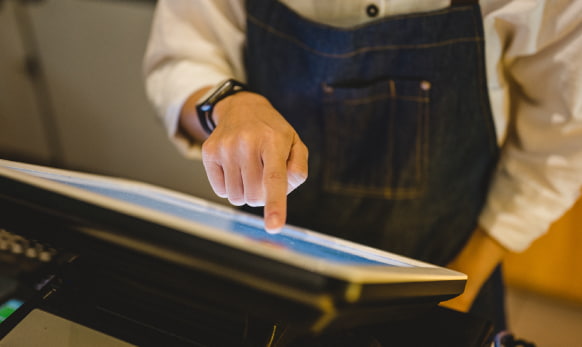While preparing for this school year was like no year before, the flexibilities announced by the USDA in June were a huge step in supporting K‑12 Nutrition Directors to have safe and more manageable returns. The nationwide waivers were recently extended through the end of the school year and offer flexibility for:
- Meal pattern requirements
- Group settings and meal service times
- Meal pickup for students in virtual learning
Meaning, you now have the ability to continue feeding students no matter where they’re learning.
While the extra wiggle room is ideal, it causes major changes in the way cafeterias have been accustomed to operate for decades. So how do you go about serving hundreds of students that may not ever be stepping foot in the cafeteria?
Adopting nutrition technology is a secure, cost-saving, and ultra-efficient way to manage all of your moving pieces this school year. The following technologies can help transform your K‑12 food service operations to fit the times while also boosting accessibility and proactive communication.
Tools that Power K‑12 Food Service
Program Management Software Made Specifically for K‑12 Food Service
Food service management software is an all-inclusive solution that acts as the brain of your operation.
Integrating with your SIS, a food service management software hosts student information. The tool ultimately helps you plan meals, collect payments, manage inventory, and more. All of your data is safely hosted in the cloud, so you can access it from anywhere.
With brand new logistics to orchestrate, your food service management software can do the heavy lifting to keep you organized and informed at all times.
My In-House RD
It’s easier than you think to get your very own registered dietician (RD). While you’re busy ensuring your students and staff are fed, a RD and their team of nutrition professionals can:
- Manage ingredient entry
- Create USDA-approved recipes
- Plan cycle menus
- Publish menus online
- Maintain publication records
A RD can save you massive amounts of time while making sure your menus are all in compliance. The best part? They don’t have to be hired locally, they can do it all virtually, making for a contactless and budget-friendly solution.
Online & Mobile Ordering
Offering the ability to order meals from anywhere is practically mandatory for K‑12 food service these days. Online ordering enables students, families and staff to view, order, and even pay for cafeteria meals from any device with an internet connection.
With versatile mobile ordering options, you can increase participation in school nutrition while maintaining social distancing guidelines. Plus, the convenience of being able to pay online improves your collection rate and increases revenue.
Mobile Apps
With millions of children partaking in online learning this school year, communication is essential. On average, we check our phones 58 times a day.
If you have something to communicate to parents or students, pushing it directly to a student and parent mobile app is a great way to make sure it’s seen.
In addition, a communication app like ours at LINQ, makes it super simple to get the word out to multiple channels at once. Send messages through text, email, and social media with the push of a button.
Offline POS
Point of Sale (POS) systems help you simplify and speed up your serving process by integrating with your student data and quickly processing payments.
While having a web-based POS means you can process orders in any location, connectivity issues can happen. Serving meals in more locations outside of the cafeteria, makes the possibility of losing a strong connection even more likely.
In the event of an outage or connectivity issue, you’ll want to keep serving. A POS with offline capability allows you to continue inputting orders and will sync the collected data when the connection is restored.
Technology is Changing in K‑12 Food Service
This year is full of new challenges within K‑12 food service, but it’s also your year to innovate.
Whether you’re planning a new cafeteria layout and lunch schedule to maintain social distancing, or working on a new meal pick up process for students learning from home (or both!), technology is going to play a significant role.
K‑12 nutrition technology is built to help you forecast inventory, manage food allergies, gather payments, communicate with families, and so much more.
Now is the time to take advantage of the integrated tools that help you run a safe and healthy operation and empower your lunchroom this school year and beyond.
